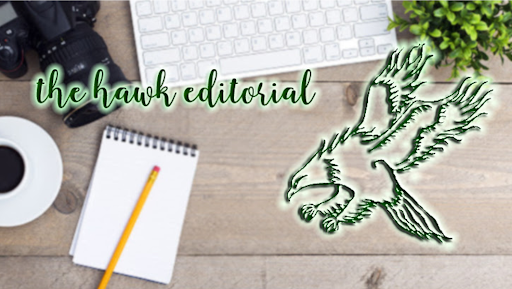To any outside reader, she was far from perfect. She was short, scruffy and unkempt, nothing like the other elegant, attractive papers. Yet, we could not have been prouder.
Upon entering middle school, my peers began discussing mental health issues derived from their studies and prominent areas of social injustice. I realized that even though the students of Hopkins Junior High School whispered stories of socioeconomic, racial and gender inequities to their friends, my peers needed an open forum to convey student expression and represent their voices. That need motivated me to call and pitch an idea for an inclusive newspaper to the principal and my friends just one month after school started.
My peers and I spent the next month brooding, writing, designing and assembling what became the oddly short, first edition of The Hawk Editorial, our school’s first student-run newspaper. Nevertheless, nearly two months later, almost half of the school was submitting articles and works to be published in the paper. From then on, it was no longer a bland newspaper to be eyeballed and tossed aside — it was our school’s official newspaper.
The real fruit of our labor was not a seemingly clumsy pile of paper routinely distributed every month; rather, it was a developed, deeper understanding of our world and how ink plays an integral part in connecting and shaping our community. Perhaps because my experience with English had been largely limited to classroom lectures, I was surprised to discover that the pen I held could create lines of connectivity to frame a picture of everyone’s story and construct a bridge joining opinions and views.
In the classroom, the way that writing is taught often creates walls in which each technique or idea is segregated. Literally and figuratively, The Hawk Editorial transcended these walls and proved to us that different ideas and voices are written on the same page.
“Show don’t tell” wasn’t just some didactic lesson allowing the author to pass the next test; it is meant to suck the reader into a fresh, descriptive world — one that, in the case of our newspaper, effectively binds student thought to expression. The Hawk Editorial proved to us that different ideas and voices can ultimately be written on the same page. Although our newspaper was initially created with a meager few articles hastily compiled, by the time I graduated it was a triumph — one I passed on to the school’s younger students.
The Hawk Editorial opened the door to new literary perspectives to further inspire my readers — and the newspaper that began as a scrap of mere ideas evolved into my family: it introduced me to my passion and taught me lessons beyond those I learned in the classroom. It taught me the meaning of dedication, camaraderie from a shared passion and love for what I do.
